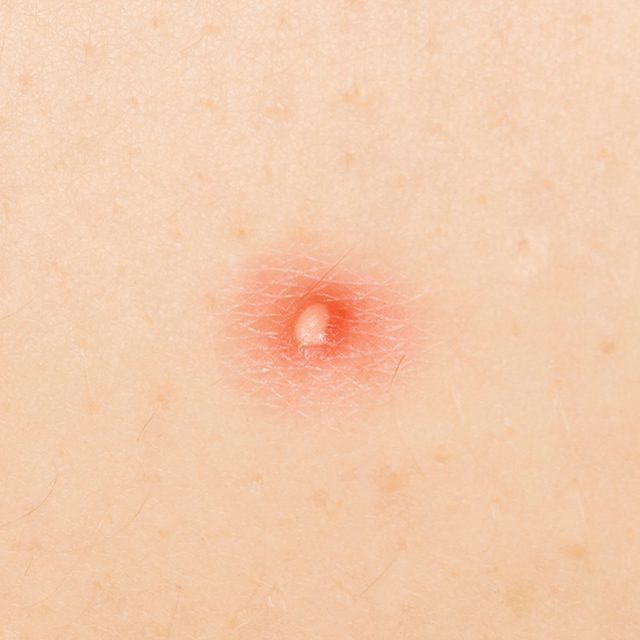Discover the difference between three common skin blemishes.
Noticing a skin growth can be alarming. Is it a cyst? A boil? A skin tag? While most of the time these small, raised protrusions are nothing to fret over, some do warrant a visit to the doctor. Here’s what to look for and an overview of your treatment options.
IDing a Skin Tag
Cleveland Clinic describes a skin tag as “a narrow stalk of skin that bulges at the end.” They’re typically flesh-colored and often appear in places that experience friction or rubbing. The benign growths can occur on anyone at any age. While they can be bothersome at times, skin tags only require medical attention if they’re twisted, irritating, or bleeding.
Treatment Options


If your skin tag causes too much discomfort, a doctor’s visit is your best bet to find relief. Snipping and freezing are two common methods used to remove tags, while electrodesiccation is a third option that involves drying out the tissue with an electric current. The internet is packed with “at-home” removal tutorials for skin tags and cysts, but be wary of these quick and easy fixes. Until you’re diagnosed by a doctor, you could be mistaking something more serious (like skin cancer) for a simple skin tag.
Quick Note:
The internet is packed with “at home” removal tutorials for skin tags and cysts, but be wary of these quick and easy fixes. Until you’re diagnosed by a doctor, you could be mistaking something more serious (like skin cancer) for a simple skin tag.
IDing a Cyst
Unlike skin tags, which only consist of skin, epidermoid cysts are filled with keratin. They too can develop anywhere on the body and are typically flesh-colored. How can you tell them apart from a skin tag? Cysts develop under the skin, while tags grow on the skin’s surface. See a doctor if a new growth suddenly appears under your skin. Chances are it’s a benign cyst, but there’s a possibility it could be a tumor.
Treatment Options



Since cysts are usually benign, no treatment is necessary in most cases. However, Cleveland Clinic experts say that when cysts become inflamed, infected, or painful, they should be examined by a doctor. But beware – cyst removal sometimes comes at the price of a scar. Some cysts can be opened and drained, while others can be excised. One option that doesn’t involve scarring is injecting the cyst with steroids, which decreases swelling and alleviates pain.
Quick Note:
There are several varieties of cysts, from ganglion to sebaceous. All are likely benign and occur in different areas of the body. Sebaceous cysts affect oil glands on the skin while ganglion cysts are often found on the tendons or joints of wrists and hands.
IDing a Boil
Unlike skin tags and cysts, boils are bumps that are painful, red, and swollen. As time progresses, boils can increase in size as they fill with pus, and they will eventually develop a yellowish head that will rupture and drain. Most severe boils are caused by the bacterial infection Staphylococcus aureus.
Treatment Options



If your boil is small and you only have one, a visit to the doctor isn’t usually necessary. However, the Mayo Clinic suggests seeing a doctor is you have a boil that is:
- On your face
- Is extremely painful or worsening
- Causes a fever
- Is longer than 2 inches
- Recurs
- Has not healed in two weeks

